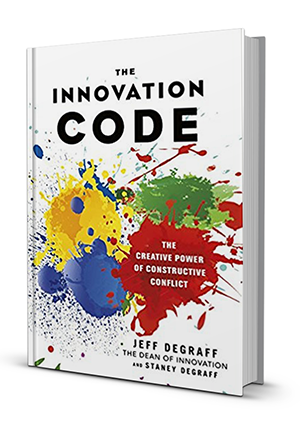Don’t most people notice the weather? Yes, but they don’t respond to it. In my home state of Michigan, there were signs as far back as the 1970s that the auto manufacturing jobs on which so many relied were leaving the country. By 1994, Michael Moore had made his movie “Roger and Me,” about the horrific effects of outsourcing on his hometown of Flint. Word was out. I personally had two friends who took it upon themselves to get new training before their manufacturing jobs disappeared. They started to ask themselves and their friends: is there any reason to think the number of auto factory jobs is going to go back up again? Is the work I do so special that it will be necessary no matter what happens to the auto industry?
When they thought about these questions, they realized the answers were no and no. So then they looked around for industries where the weather was better. Online sales were growing every year, and one of my friends had always liked and been good with computers. The population of elderly people in Michigan was growing, and my other friend – a big, burly guy, the last person you would have guessed – had always had a feeling for caring for the elderly. In the end, one became a website designer and the other a nurse. Yet most people with jobs in the auto industry kept going to work as if they didn’t see the storm clouds or feel the first drops of rain. Either they felt the sensations and didn’t think about them or they had no way to apply their creativity to what they observed all around. 
How can you shift from passive notice of the weather to active response? To begin, make time to reflect on the larger changes going on around you. Instead of using all your time to check items off the to-do list or kick back and relax, give yourself a half a day a month, or two hours here and there, to watch the weather. Put it on your calendar. Treat it as one of your most important meetings. When the time comes, learn about changes going on in your area and your industry. How could you start?
- Read a news magazine or industry publication that you normally skip
- Replace an hour of “entertainment” television each week in favor of a news or documentary program about an issue you are concerned about
- Browse an online news aggregator such as HuffingtonPost or Google News, that gives a wide range of experts and observers a place to comment on the trends they observe
- Make use of the expertise and experience of the people all around you. Make a point to talk to different folks at community gatherings – at a party, after religious services, at a school event – and ask them what’s new in their business or their neighborhood. Where do they see opportunities? Or what has them concerned?
- When you travel, talk to the people traveling alongside you. The person next to you on the bus or plane, or in the seat nearby when you stop for a bite to eat. The driver of the airport shuttle or the taxi. Are things changing around here? What’s on their minds?
- Join a group on Facebook or another social networking site that provides neutral information on big-picture issues that concern you – health, education, finance, etc. Remember that the goal here is to choose a group that will expose you to new points of view, not just reinforces the views you expect to be true.
- If you have children in your life, discuss issues of the day that get raised at your child’s school. Work to help them develop a big picture perspective. As you help them to think for themselves, you may find that they are learning things or encountering situations that are new to you as well.
In any of these ways, you can begin to become aware of the changes on the horizon. But don’t just sit alone to wonder and worry – find others who are interested in watching the weather and discussing the longer-term possibilities. “I saw on Huffington Post that X and Y. Do you think that will happen here?” “I read in the newspaper that …” Start an ongoing conversation, with others and with yourself. Conduct thought experiments: When you look up at the sky, what do you see coming? What might that mean? Is that something that’s going to matter for you?
The most important thing is to remember that you are starting a learning process that will take time. If you spend one afternoon learning and talking, chances are you won’t end the day with any answers at all. That’s exactly where you should be. For now, your goal is to establish the innovator’s habit of looking up and identifying some clouds you need to keep an eye on, some areas down the road that are expecting sunshine.
Discover the power of constructive conflict and how it can help foster innovation. By reading The Innovation Code, you will learn how to harness tension and transform it into positive energy to successfully implement your innovation projects.

